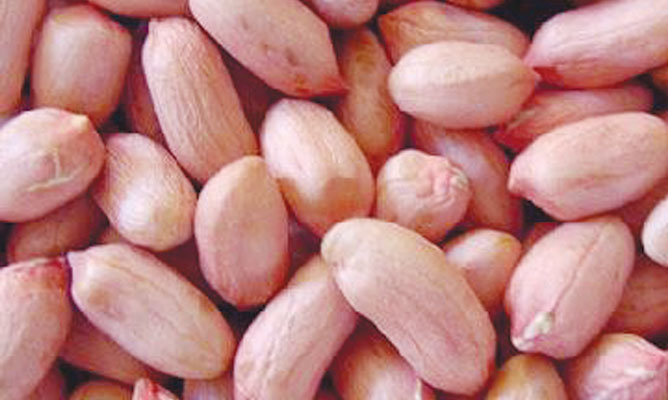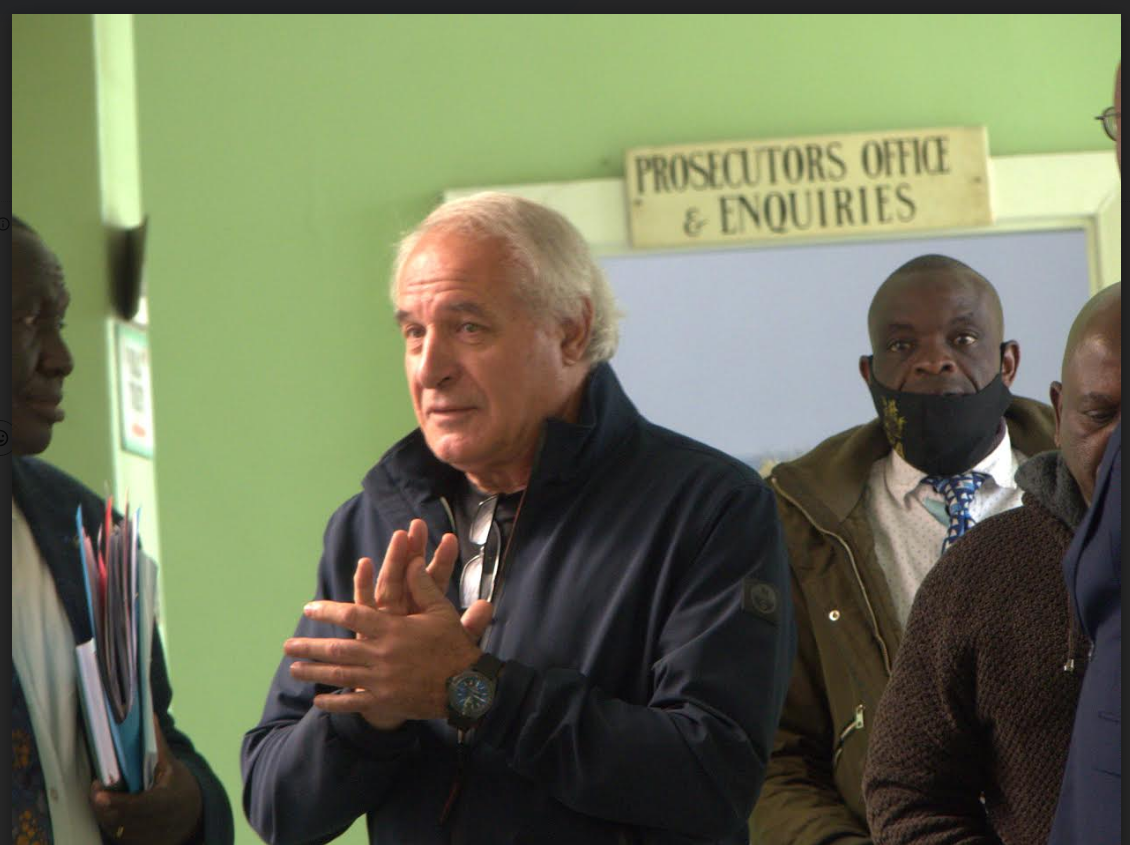
Zimbabwe’s slow recovery from years of economic depression has suffered a terrible blow from recurrent droughts, halving the expected production of 742 000 tonnes of the main staple, maize, this year.
Reuters
It leaves 1,5 million Zimbabweans (16% of the population) without enough food to stay healthy, according to the UN World Food Programme.
To make matters worse, because of the ongoing El Niño, meteorologists are predicting the upcoming cropping season to be further marred by below normal seasonal rains in the semi-arid southern region of the country.

The Southern Africa Development Community has announced that over 27 million people across the southern African region will face hunger over the next six months.
Over the last two weeks, political leaders debated how to address global warming during the COP21 talks in Paris. Yet for years, many scientists have been warning us about the increase in drought risks around the world. This could lead to more frequent food crises and social unrest if no appropriate adaptation policies are in place. Agrarian countries like Zimbabwe, where over three quarters of the population depend on farming, many of which are poor rain-fed smallholdings, will suffer the most.
Though clear that we are facing this enormous and complex threat, policy-makers often say they lack a consistent picture of what climate change will cost and how it will impact in terms of food security and the future of the farming sector.
- Chamisa under fire over US$120K donation
- Mavhunga puts DeMbare into Chibuku quarterfinals
- Pension funds bet on Cabora Bassa oilfields
- Councils defy govt fire tender directive
Keep Reading
This is where the Agricultural Model Intercomparison and Improvement Project (AgMIP) comes in.
This international programme funded by UK aid, in partnership with the US Department of Agriculture, aims to better characterise and quantify the impacts of climate variability and change on the agricultural sector and food security, at global as well as regional scales.
AgMIP allows more realistic and intercomparable projections, linking climate, crop and economic models, which ultimately help farmers cope with climate variability and change.
To date, AgMIP confirmed a mostly negative impact on food production with, for instance, “an anticipated steady decrease of yields for the major staples like wheat, maize, and soybean in mid and high-latitude regions even under only small temperature increases”.
The integrated, community-driven modelling research approach also applies to work in other regions.
Local researchers and stakeholders co-develop specific adaptation options that are tailored for different types of farmers in their particular context.
It enables researchers, farmers, decision-makers, agriculture extension workers, NGOs, and other stakeholders involved in the food sector to think about solutions for future scenarios where climate change is linked with other ecological and socio-economic factors.
Sabine Homann, a researcher from the International Crops Research Institute for the Semi-Arid Tropics (Icrisat) is the principal investigator of AgMIP’s Crop Livestock Intensification Project.
Homann has worked with farmers from Nkayi district in Zimbabwe since 2010.
Poverty and climate vulnerability is extremely high here — three out of four families are poor and 22% are extremely poor.
In Nkayi about 43% of farmers have no cattle and an average of 1,3 ha of farmland, with maize yielding as low as 300kg/hectare.
Climate change is predicted to be severe in this semi-arid region as models show a temperature increase of +2 up to +3,3 °C, and a drier start of the planting season. It will impact on crops, grazing, livestock and water resources.
Food production is already very low, many farming families suffer food shortages of two to nine months, the worse off being families without livestock.
Homann found that 61% of Nkayi farm households could be negatively affected by climate change, with the poorest without cattle being worst-hit. Eighty-six percent of farmers would benefit from a combination of climate-smart adaptation technologies, which includes a crop diversification from predominantly maize to growing more drought-tolerant sorghum cereal crops, legumes like groundnuts for better soil fertility, family nutrition and income, and dual purpose forages like mucuna pruriens vine to support livestock production.
Organic soil fertility technologies like mucuna and manure, locally available and of low risk, complementary to microdosing of inorganic fertiliser in zai pits, can contribute to offset impacts of climate change and increase production and farm incomes.
Providing training and better access to accurate climate information and forecasts, at the right time and in the right format, is also vital.
In Hwange district, through another Icrisat initiative with the Zimbabwe Meteorological Services Department and the Department of Agricultural Technical and Extension Services of Zimbabwe, farmers were presented climate seasonal forecasts through mobile phone messaging and workshops, and could test various climate-smart innovations in “climate field schools”.
A recent household survey shows the positive impact this had on yields.
The majority of families who received climate information and were trained on best bet technologies have seen their sorghum harvests jump from 300kg/ha to 1 100kg/ha on average.
The impact of climate information services has also been documented in other countries.
“The great value of AgMIP is when we share various scenarios and impact projections between all agriculture stakeholders at community to national levels to facilitate changes in the different farming systems,” says Homann. For example, scientists advised reviving groundnut cultivation given the high demand from the private sector who currently import the nuts from Malawi and Zambia, as well as the nutrition value of this protein-rich crop, its drought tolerance, soil fertility boosting (as it is a legume) and livestock feed value features.
In response, Nkayi farmers raised key issues of the lack of quality certified seeds, storage and transport facilities to major markets like Harare food companies.
Zimbabwe’s government is now emphasising greater support to the groundnut value chains with new high-yielding varieties proposed for release in the coming months.
Icrisat has since partnered with the government and imported 20 tonnes of groundnut seed from Malawi, which was distributed to farmers for seed multiplication and testing.
To buffer the poorest from the impacts of climate change, a radical shift is needed such as a shift in crop patterns, linking farmers to market opportunities and integrating crop and livestock production. This can only happen when large-scale measures are taken by policymakers and key stakeholders like the private sector. AgMIP protocols for testing the impacts of these changes are critical to support these policy decisions. Climate adaptation goes beyond promoting better drought-tolerant crops, climate-smart fertilisation practices or providing agro-climate extension services.
To make a tangible impact in rural poor regions like Nkayi district, it requires an integrated approach from labs to farms right up to the marketplace, and co-ordinated action between the public and private organisations involved in the food sector.
As Homann points out, climate adaptation has to go hand-in-hand with efforts to make farming more profitable, attractive, and resilient over the years, for all types of farms.
what is AgMIP?
UK aid has funded AgMIP since it was founded in 2010 with support from USDA. Since then, additional funds have been awarded by USDA, USAid, The Bill and Melinda Gates Foundation, among others. AgMIP is now a community of over 800 researchers from around the world who work together to set standards in model intercomparison, improvement and assessment with the support of their home institution. The AgMIP programme provides a better framework to directly evaluate the impact of each adaptation strategy, so decision-makers can respond by acting now to mitigate the projected impact on the poorest. The second phase of AgMIP, which was launched in 2014, further develops the programme by focusing on co-design and co-production of a range of web-accessible information and learning tools for use by policymakers and planners in partner countries in sub-Saharan Africa and South Asia. These products will enhance and improve access to AgMIP data and results in a format that will support effective decision-making on the ground.










